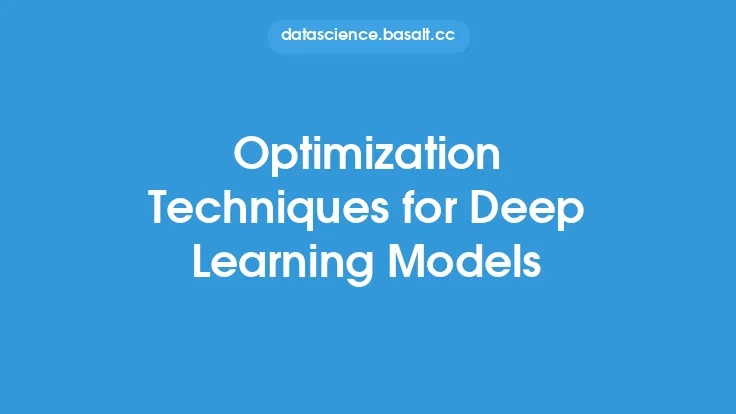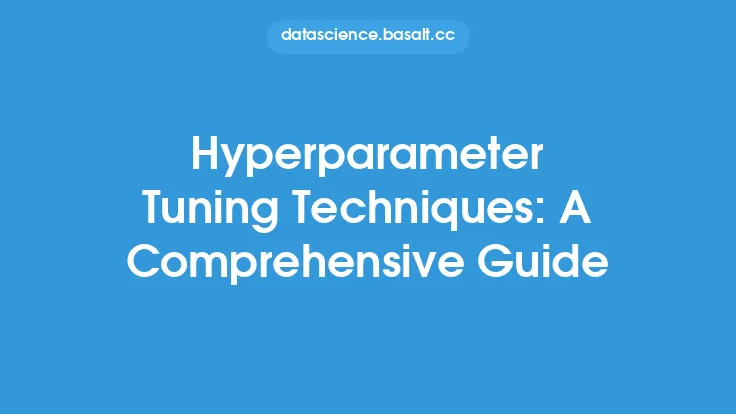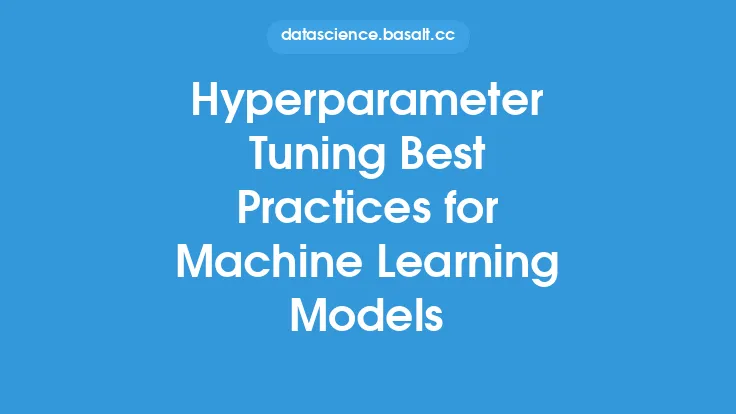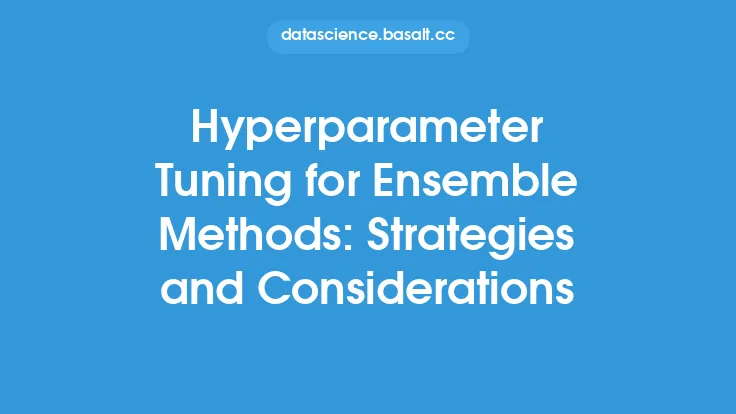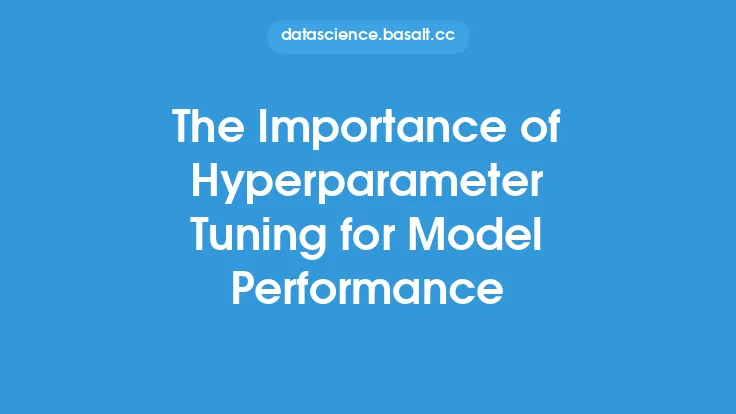Bayesian optimization is a powerful technique used for hyperparameter tuning in machine learning. It is a probabilistic approach that uses Bayesian inference to search for the optimal set of hyperparameters that result in the best performance of a machine learning model. In this article, we will delve into the details of Bayesian optimization for hyperparameter tuning, exploring its underlying principles, advantages, and applications.
Introduction to Bayesian Optimization
Bayesian optimization is a global optimization technique that uses a probabilistic approach to find the maximum or minimum of a function. It is particularly useful when the function is expensive to evaluate, has multiple local optima, or has a large number of parameters. In the context of hyperparameter tuning, Bayesian optimization is used to search for the optimal set of hyperparameters that result in the best performance of a machine learning model. The technique uses a probabilistic model to predict the performance of the model for a given set of hyperparameters and then uses this prediction to select the next set of hyperparameters to evaluate.
Key Components of Bayesian Optimization
There are several key components of Bayesian optimization that are essential for its success. These include:
- Surrogate function: A probabilistic model that predicts the performance of the machine learning model for a given set of hyperparameters. Commonly used surrogate functions include Gaussian processes, random forests, and neural networks.
- Acquisition function: A function that determines the next set of hyperparameters to evaluate based on the predictions of the surrogate function. Commonly used acquisition functions include probability of improvement, expected improvement, and entropy search.
- Hyperparameter space: The space of possible hyperparameters that can be tuned. This can include continuous, discrete, and categorical hyperparameters.
- Objective function: The function that is used to evaluate the performance of the machine learning model. This can include metrics such as accuracy, precision, recall, and F1 score.
How Bayesian Optimization Works
The Bayesian optimization process involves the following steps:
- Initialization: The hyperparameter space is defined, and an initial set of hyperparameters is randomly selected.
- Evaluation: The machine learning model is trained and evaluated using the initial set of hyperparameters, and the objective function is calculated.
- Surrogate function update: The surrogate function is updated using the evaluated hyperparameters and their corresponding objective function values.
- Acquisition function calculation: The acquisition function is calculated using the updated surrogate function, and the next set of hyperparameters to evaluate is selected.
- Iteration: Steps 2-4 are repeated until a stopping criterion is reached, such as a maximum number of iterations or a satisfactory level of performance.
Advantages of Bayesian Optimization
Bayesian optimization has several advantages that make it a popular choice for hyperparameter tuning. These include:
- Efficient search: Bayesian optimization can efficiently search the hyperparameter space, even when the number of hyperparameters is large.
- Handling multiple local optima: Bayesian optimization can handle multiple local optima in the hyperparameter space, which can be challenging for other optimization techniques.
- Flexibility: Bayesian optimization can be used with a variety of machine learning models and objective functions.
- Handling expensive function evaluations: Bayesian optimization is particularly useful when the objective function is expensive to evaluate, as it can reduce the number of evaluations required to find the optimal hyperparameters.
Applications of Bayesian Optimization
Bayesian optimization has a wide range of applications in machine learning, including:
- Neural architecture search: Bayesian optimization can be used to search for the optimal neural network architecture for a given problem.
- Hyperparameter tuning for deep learning: Bayesian optimization can be used to tune the hyperparameters of deep learning models, such as learning rate, batch size, and number of layers.
- Tuning of traditional machine learning models: Bayesian optimization can be used to tune the hyperparameters of traditional machine learning models, such as support vector machines, random forests, and gradient boosting.
Challenges and Limitations of Bayesian Optimization
While Bayesian optimization is a powerful technique for hyperparameter tuning, it also has several challenges and limitations. These include:
- Computational cost: Bayesian optimization can be computationally expensive, particularly when the number of hyperparameters is large.
- Choice of surrogate function and acquisition function: The choice of surrogate function and acquisition function can significantly affect the performance of Bayesian optimization.
- Handling high-dimensional hyperparameter spaces: Bayesian optimization can struggle with high-dimensional hyperparameter spaces, which can lead to the curse of dimensionality.
Real-World Examples of Bayesian Optimization
Bayesian optimization has been successfully applied in a variety of real-world applications, including:
- Image classification: Bayesian optimization has been used to tune the hyperparameters of deep learning models for image classification tasks, such as CIFAR-10 and ImageNet.
- Natural language processing: Bayesian optimization has been used to tune the hyperparameters of deep learning models for natural language processing tasks, such as language modeling and sentiment analysis.
- Recommendation systems: Bayesian optimization has been used to tune the hyperparameters of recommendation systems, such as collaborative filtering and content-based filtering.
Conclusion
Bayesian optimization is a powerful technique for hyperparameter tuning in machine learning. Its ability to efficiently search the hyperparameter space, handle multiple local optima, and flexibly adapt to different machine learning models and objective functions make it a popular choice for many applications. While it also has several challenges and limitations, Bayesian optimization remains a valuable tool for machine learning practitioners and researchers. By understanding the underlying principles and applications of Bayesian optimization, practitioners can harness its power to improve the performance of their machine learning models and drive business success.
